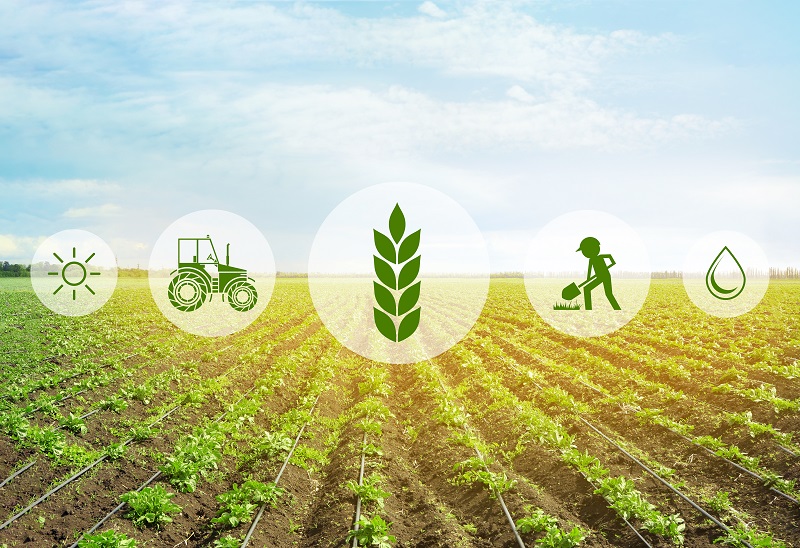How Data Will Turn Supply Chain Chaos Into Opportunity for Ag Retailers and Growers

Disruption is the new normal in the supply chain. The bigger question is what we do about it.
I recently attended the PACE Executive Forum in Kansas City, MO, where I was honored to speak with agribusiness leaders about the challenges that continue to impact sustainable food production. Not surprisingly, supply chain volatility was a hot topic.
Lara Sowinski, Group Editor for CropLife Media Group, was quick to point out in opening remarks that just when we thought the supply chain would get back to normal, new problems cropped up. The most recent? Backed-up grain barges sitting idle on the Mississippi thanks to record low water levels, another Covid-lockdown at a Chinese port, and the looming threat of a railroad strike. All added to the impacts of rising inflation, sky-high energy and fuel costs, crippling labor shortages, and ongoing geopolitical tensions in Russia and China.
The question is no longer when will the supply chain stabilize but how can we best prepare for the next unforeseen catastrophe in the future?
At CropTrak we believe solutions are in the data. Over the last decade, we have worked with food and agriculture companies to eliminate information silos and unlock new value across supply chains that include over 70 crops in 70 countries. Real-time, collaborative, transparent data is the key to solving the systemic supply chain issues plaguing our safe and sustainable production of food.
At PACE, we explored the idea that data and crop production are now one – and everyone along the supply chain is even more tightly connected through data.
Data Requirements Remaking Every Supply Chain
After years of delay, the FDA has finally dropped the hammer on key data requirements regulated under the Food Safety and Modernization Act (FSMA). On Nov. 7 they finalized FMSA’s rule on traceability requirements applicable to high-risk food crops and products. The rule will go into effect January 2023 and food companies will have two years to comply.
The new traceability rules mandate a 24-hour digital response after a food safety incident. The goal is real-time, food-safety data available on demand and able to trace any item in the supply chain both forwards and backwards. My father’s old three-ring spiral notebook will no longer suffice as “record-keeping” on today’s farm. Food companies must have at their fingertips a digital record of everything that happened to a food item in their ingredient list, from the grocery store it was sold at to the farmer that produced it, transportation, processing, inputs applied, and many other activities involved along the way.
While a massive change, it’s also an opportunity for agribusiness partners to help their farmer customers maintain a digital history of their production records, including chemical applications, water use, and soil management. In addition, farmers will inevitably lean on their trusted advisors for technical help, relying on retailers to understand and see through the noise and confusion of this transition and guide them in the choices and changes they need to make to ensure their crops can make it to the customer with the required data attached.
But if we just think about how data requirements will impact the beginning of the supply chain, we’re missing the big picture of opportunities the data revolution is generating for the agricultural industry.
Food companies not only have the new FSMA data requirements to deal with, if they’re publicly traded they must now meet mandatory environmental, social and governance (ESG) disclosure requirements detailing their climate-related risks. Think about the value of all that data these companies are now mandated to collect and record to proof-point their ESG impact.
But even more so than just meeting disclosure rules, this data holds value as the key to unlocking new decision-making capabilities to meet their ESG goals in the first place.
If a food company can use data to reveal food loss patterns in shipping, crop production, harvest, or at any point along the supply chain, and then eliminate that loss, it’s an immediate ESG win. Less food loss means less land used to fulfill their production needs, improving key climate-risk-related metrics like water and nitrogen use. It also means that the value of those ingredients that do come across the scale are more valuable as a percentage of the whole, profitability that can be shared.
They can also turn this data into key differentiation in the marketplace to engage consumers in new and meaningful ways. Take the produce guy selling watermelons, he starts wrapping his melons in paper and now he can say ‘hey now I’m Global Gap, now I’m climate-smart, now I’m regenerative.’ That’s a labeling opportunity. For a food company it takes them right back to needing data and once again, the value associated with that data makes the product more valuable.
You may be asking: “What does it mean for growers and ag retailers?”
Ultimately, all these new regulations stacked on top of supply chain disruptions represent risk. For food companies – who are our ultimate customers, they will have no choice but to build more collaborative and transparent supply chain partnerships than they ever have had before. Information silos will have to be overcome.
I see it as a shift in the balance of power, long held at the top of the supply chain, to creating an equal playing field that includes all the data stakeholders including growers, ag retailers, and coops.
In a not-too-distant future, a crop won’t be useful to a food company without a complete data package.
What we will begin to see is a table of crop prices and right next to it, a table of data prices linked to those crops. And in the very near future, we’re not going to be able to ship a crop without digital data associated with it. We simply won’t be able to get it to market. Nothing will move in the supply chain without data.
Between the supply chain, new regulations and market competition, we are sitting at a crossroads – business as usual and hope for the best? Or, embrace data technology, build new collaborations and uncover new models of success? I vote for data.






